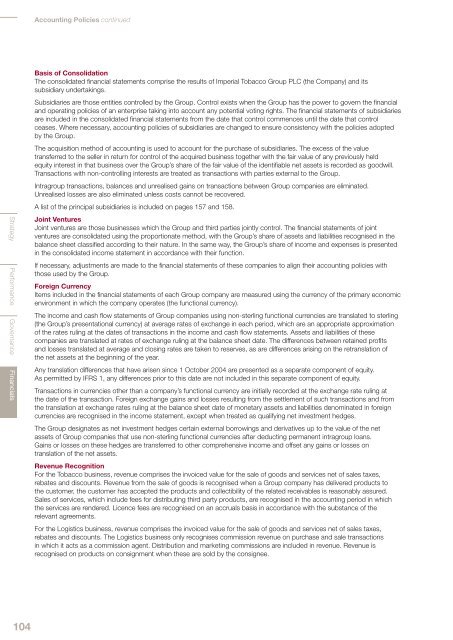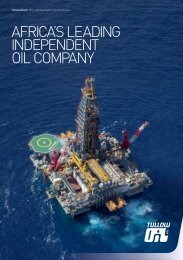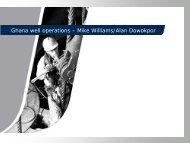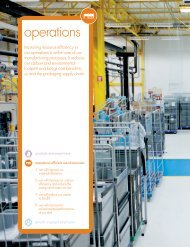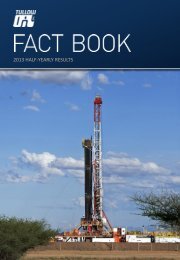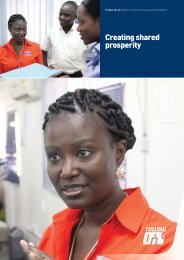Annual report 2010 - Imperial Tobacco Group
Annual report 2010 - Imperial Tobacco Group
Annual report 2010 - Imperial Tobacco Group
Create successful ePaper yourself
Turn your PDF publications into a flip-book with our unique Google optimized e-Paper software.
Accounting Policies continuedStrategy Performance Governance FinancialsBasis of ConsolidationThe consolidated financial statements comprise the results of <strong>Imperial</strong> <strong>Tobacco</strong> <strong>Group</strong> PLC (the Company) and itssubsidiary undertakings.Subsidiaries are those entities controlled by the <strong>Group</strong>. Control exists when the <strong>Group</strong> has the power to govern the financialand operating policies of an enterprise taking into account any potential voting rights. The financial statements of subsidiariesare included in the consolidated financial statements from the date that control commences until the date that controlceases. Where necessary, accounting policies of subsidiaries are changed to ensure consistency with the policies adoptedby the <strong>Group</strong>.The acquisition method of accounting is used to account for the purchase of subsidiaries. The excess of the valuetransferred to the seller in return for control of the acquired business together with the fair value of any previously heldequity interest in that business over the <strong>Group</strong>’s share of the fair value of the identifiable net assets is recorded as goodwill.Transactions with non-controlling interests are treated as transactions with parties external to the <strong>Group</strong>.Intragroup transactions, balances and unrealised gains on transactions between <strong>Group</strong> companies are eliminated.Unrealised losses are also eliminated unless costs cannot be recovered.A list of the principal subsidiaries is included on pages 157 and 158.Joint VenturesJoint ventures are those businesses which the <strong>Group</strong> and third parties jointly control. The financial statements of jointventures are consolidated using the proportionate method, with the <strong>Group</strong>’s share of assets and liabilities recognised in thebalance sheet classified according to their nature. In the same way, the <strong>Group</strong>’s share of income and expenses is presentedin the consolidated income statement in accordance with their function.If necessary, adjustments are made to the financial statements of these companies to align their accounting policies withthose used by the <strong>Group</strong>.Foreign CurrencyItems included in the financial statements of each <strong>Group</strong> company are measured using the currency of the primary economicenvironment in which the company operates (the functional currency).The income and cash flow statements of <strong>Group</strong> companies using non-sterling functional currencies are translated to sterling(the <strong>Group</strong>’s presentational currency) at average rates of exchange in each period, which are an appropriate approximationof the rates ruling at the dates of transactions in the income and cash flow statements. Assets and liabilities of thesecompanies are translated at rates of exchange ruling at the balance sheet date. The differences between retained profitsand losses translated at average and closing rates are taken to reserves, as are differences arising on the retranslation ofthe net assets at the beginning of the year.Any translation differences that have arisen since 1 October 2004 are presented as a separate component of equity.As permitted by IFRS 1, any differences prior to this date are not included in this separate component of equity.Transactions in currencies other than a company’s functional currency are initially recorded at the exchange rate ruling atthe date of the transaction. Foreign exchange gains and losses resulting from the settlement of such transactions and fromthe translation at exchange rates ruling at the balance sheet date of monetary assets and liabilities denominated in foreigncurrencies are recognised in the income statement, except when treated as qualifying net investment hedges.The <strong>Group</strong> designates as net investment hedges certain external borrowings and derivatives up to the value of the netassets of <strong>Group</strong> companies that use non-sterling functional currencies after deducting permanent intragroup loans.Gains or losses on these hedges are transferred to other comprehensive income and offset any gains or losses ontranslation of the net assets.Revenue RecognitionFor the <strong>Tobacco</strong> business, revenue comprises the invoiced value for the sale of goods and services net of sales taxes,rebates and discounts. Revenue from the sale of goods is recognised when a <strong>Group</strong> company has delivered products tothe customer, the customer has accepted the products and collectibility of the related receivables is reasonably assured.Sales of services, which include fees for distributing third party products, are recognised in the accounting period in whichthe services are rendered. Licence fees are recognised on an accruals basis in accordance with the substance of therelevant agreements.For the Logistics business, revenue comprises the invoiced value for the sale of goods and services net of sales taxes,rebates and discounts. The Logistics business only recognises commission revenue on purchase and sale transactionsin which it acts as a commission agent. Distribution and marketing commissions are included in revenue. Revenue isrecognised on products on consignment when these are sold by the consignee.104


